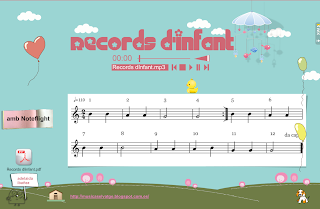Béla Viktor János Bartók, conocido como Béla Bartók (Nagyszentmiklós, Imperio Austrohúngaro -actualmente Sânnicolau Mare, Rumanía-, 25 de marzo de 1881- Nueva York, 26 de septiembre de 1945), músico húngaro que destacó como compositor, pianista e investigador de música folclórica de la Europa oriental.
Bartók fue uno de los fundadores de la etnomusicología, basada en las relaciones que unen la etnología y la musicología.
STRING QUARTET Nº 4
Escrito por el compositor en Budapest, de Julio a Septiembre del año 1927.
Interpretado por el cuarteto the Vermeer Quartet
1º Y 2º MOVIMIENTOS. ALLEGRO/ PRESTISSIMO CON SORDINO
Principio de simetría como ideal de forma…
El cuarteto se compone de cinco movimientos, con forma en puente o en arco: el tercer movimiento se encuentra entre dos Scherzos, que temáticamente se relacionan al igual que los movimientos extremos.
Armónicamente, los movimientos también están relacionados, de tal manera que, el primero y el último movimiento tienen como centro do. El segundo movimiento, mi (3a asc. de do), y el cuarto movimiento, la bemol (3a desc. de do).
STRING QUARTET Nº 4
MOVIMIENTOS 3- 4. NON TROPPO LENTO/ ALLEGRETTO PIZZICATO
El propio compositor describe el cuarteto…
“La obra consta de cinco movimientos; su ‘carácter’ corresponde a la forma sonata clásica.
El movimiento lento es el centro de la obra; el resto de los movimientos se disponen como si fueran capas a su alrededor.
El cuarto movimiento es una variación libre del segundo, y el primero y el quinto tienen el mismo material temático.
Esto es, alrededor del centro (tercer movimiento), metafóricamente hablando, el primero y el quinto son las capas extremas, y el segundo y el cuarto, las internas” .
Suchoff, B. (ed.): “Béla Bartók Essais [BBE], Lincoln y Londres, University of Nebraska Press, 1976. pág. 412
STRING QUARTET Nº 4
5º MOVIMIENTO. ALLEGRO MOLTO
El cuarteto, se forma temáticamente por pequeños motivos que se exponen en una textura contrapuntística muy densa, imitaciones libres y en canon.
The String Quartet No. 4 was written from July to September, 1927 in Budapest.
This work, like the String Quartet No. 5, and several other pieces by Bartók, is in a so-called “arch” structure – the first movement is thematically related to the last, and the second to the fourth with the third movement standing alone. Also, the outer four movements feature rhythmic sforzandos that cyclically tie them together in terms of climatic areas.
The playing time for the movements are [generally] 5, 2, 5, 2, 5 minutes respectively, a display of the mathematical logic behind this quartet.
The quartet employs a similar harmonic language to that of the String Quartet No. 3, and as with that work, it has been suggested that Bartók was influenced in his writing by Alban Berg’s Lyric Suite (1926) which he had heard in 1927.
The quartet employs a number of extended instrumental techniques; for the whole of the second movement all four instruments are played with mutes, while the entire fourth movement is played pizzicato.
In the third movement, Bartók sometimes indicates held notes to be played without vibrato, and in various places he asks for glissandi (sliding from one note to another) and so-called Bartók pizzicati (a pizzicato where the string rebounds against the instrument’s fingerboard).
The work is dedicated to the Pro Arte Quartet but the first public performance of the work was given by the Waldbauer-Kerpely Quartet in Budapest on March 20, 1929.
It was first published in the same year by Universal Edition.
Bartók can be analyzed a number of different ways; the two most popular would be analysis through traditional western music or analysis through Bartók’s research into folk music.
Bartók’s music, particularly the String Quartets, departs from traditional use of major and minor keys, instead focusing more on the chromatic scale and attempting to utilize each note equally, similar to the twelve-tone scale.
Regardless, Bartók doesn’t follow any set theory — there is some degree of method to his composition as much as there is a random element.
Bartók was always fascinated with mathematics and how it pertained to music. He extensively used whole-tone, pentatonic, and heptatonia seconda scales; the use of these scales was heavily by his interest and exploration in folk music.
He extensively researched folk music by exploring the Hungarian countryside and Eastern and Central Europe and incorporated his research into his music.
Bartók also experimented with incorporating the golden section and the Fibonacci sequence into his writing; this isn’t immediately present in String Quartet No. 4.
He did incorporate symmetrical structures into this piece, however; Movements I & V and Movements II & IV are similar. Movement III is at center, in contrast to the other movements. Movements I and V have similar motifs; the second theme in the first movement is prominent in the fifth movement.
Movements II and IV share similar ideas as well, but the ideas present within these two movements can be considered variations on themes presented earlier, expanding and building on ideas presented in the first and fifth movements.
Movement III differs from the other four movements in that it’s textured and quiet. The symmetry of the movements isn’t only limited to the themes present in the music; the lengths of the movements show symmetry between movements.
The first, third and fifth movements are 6 minutes long, where as the second and fourth are shorter, at about 3 minutes long.



+07.22.12.png)
+07.21.44.png)
